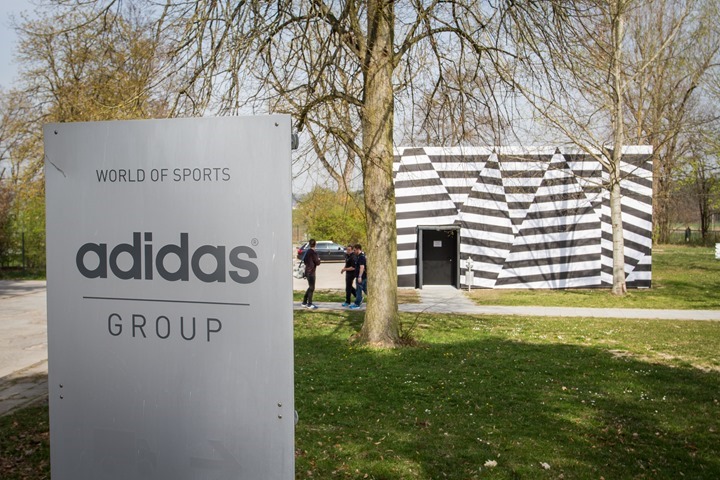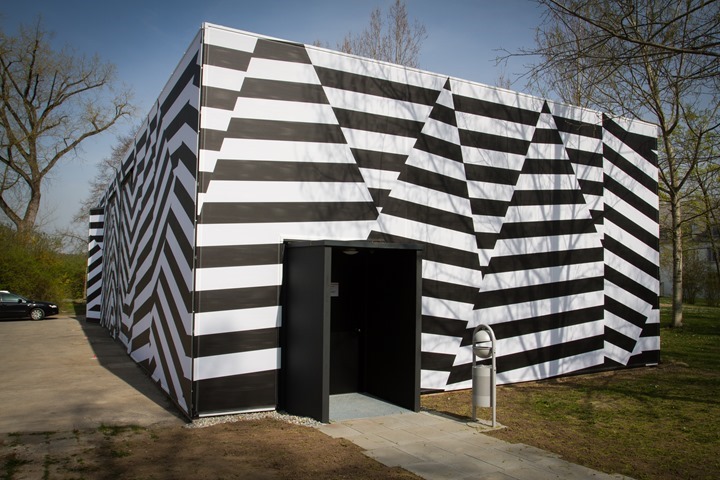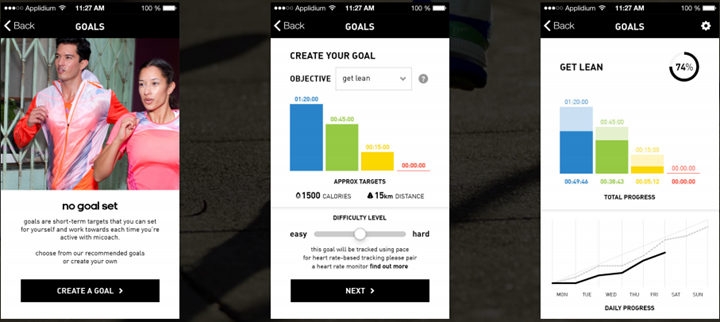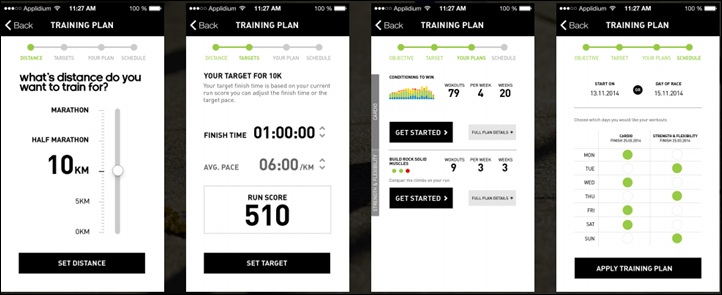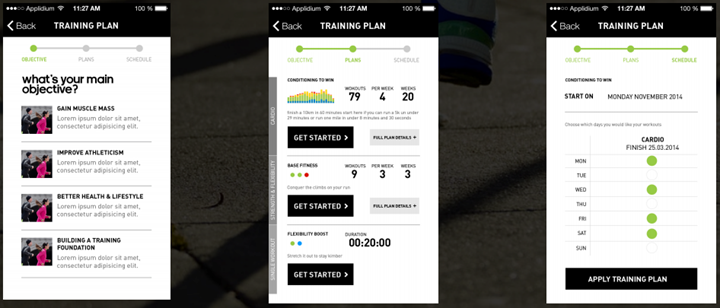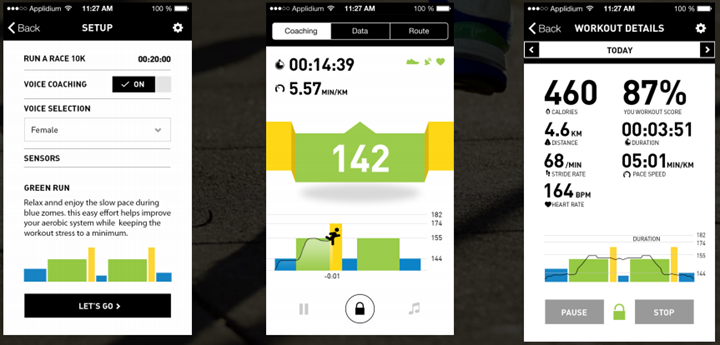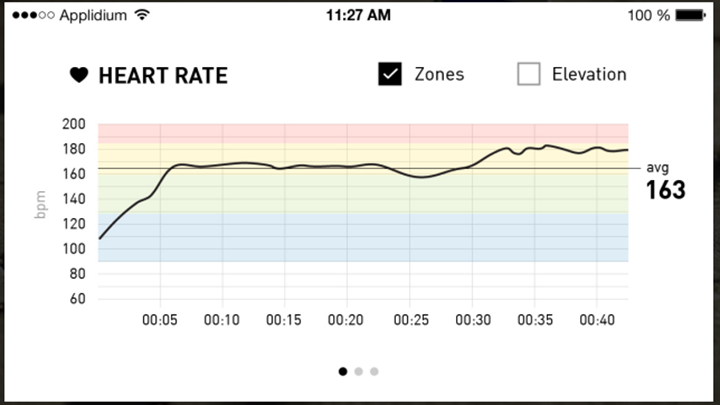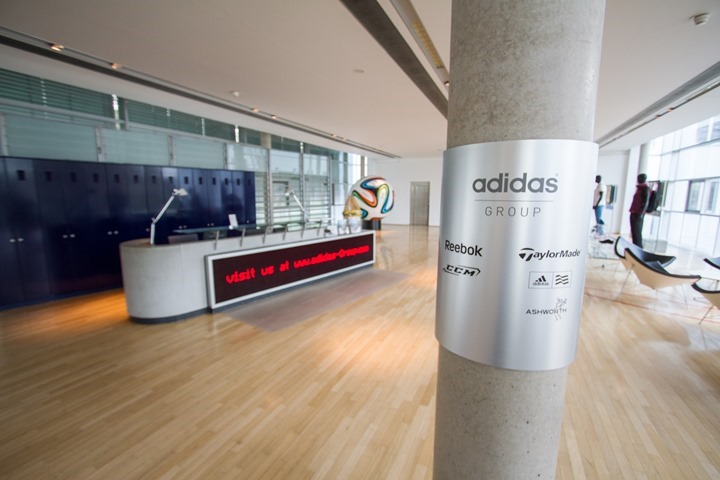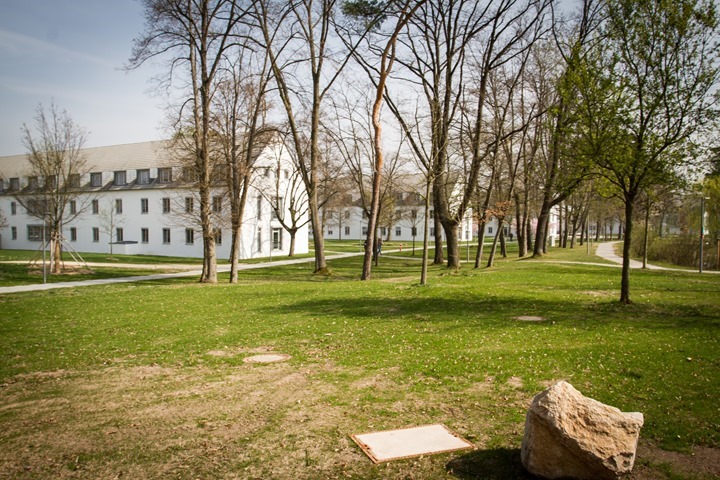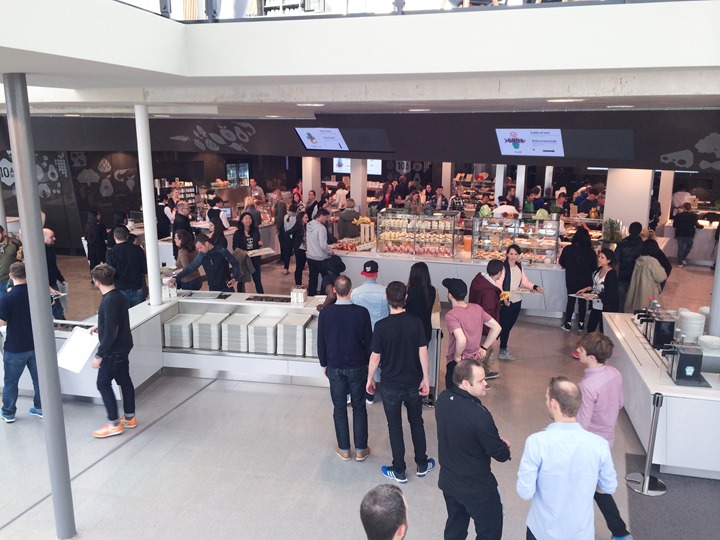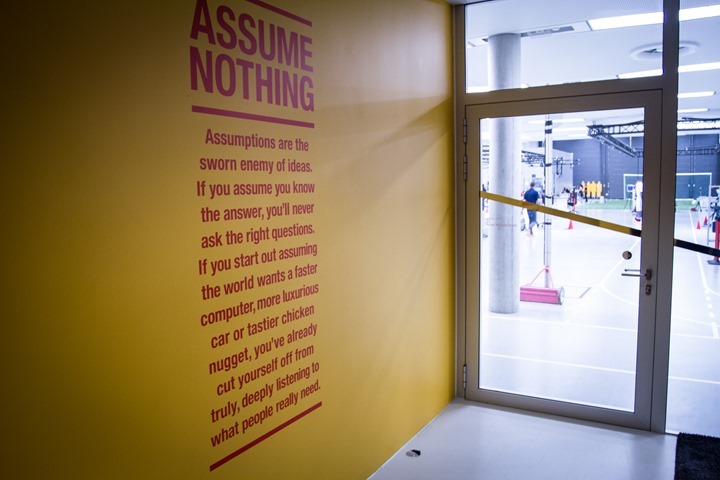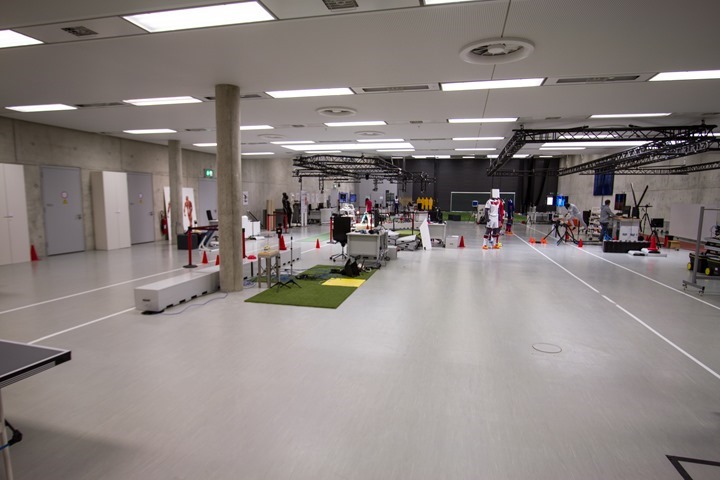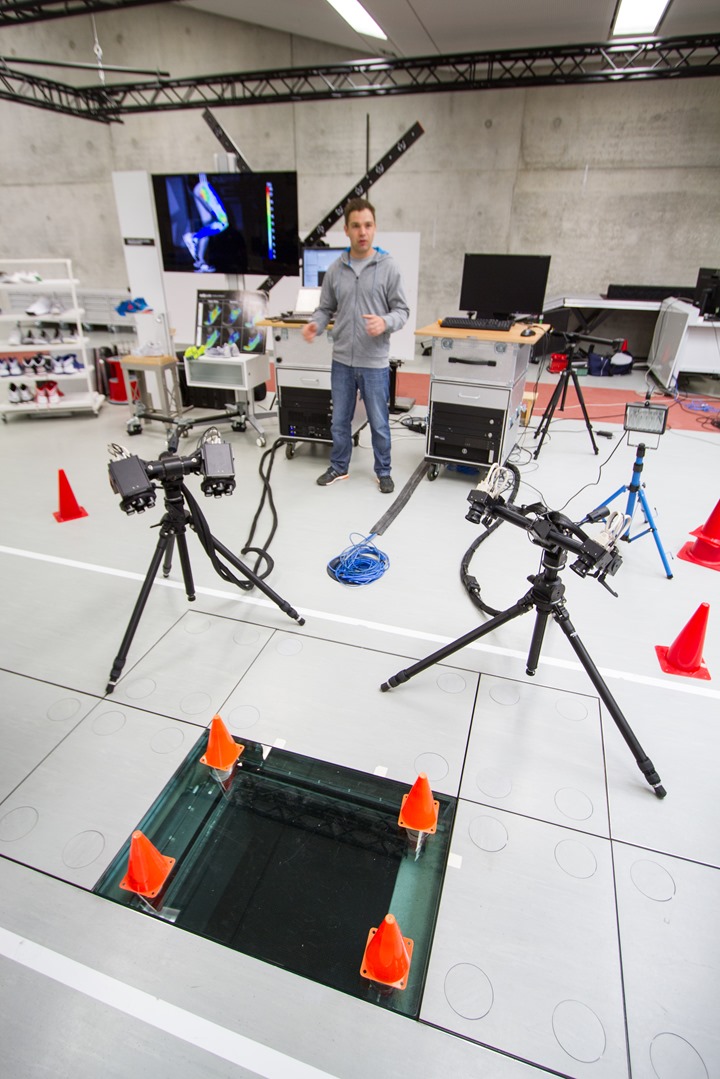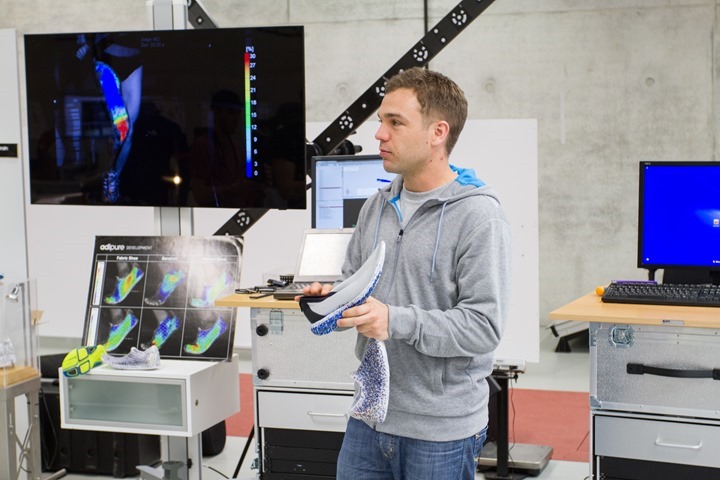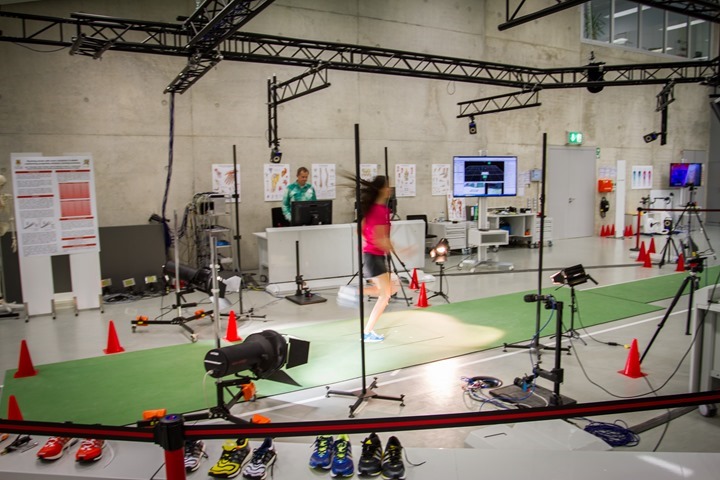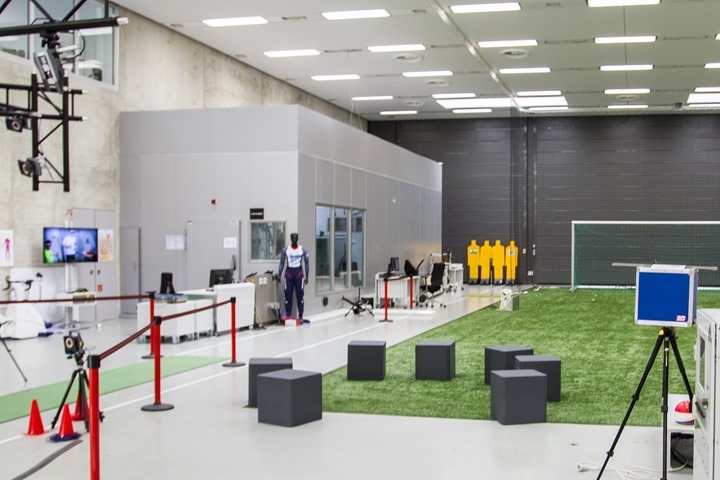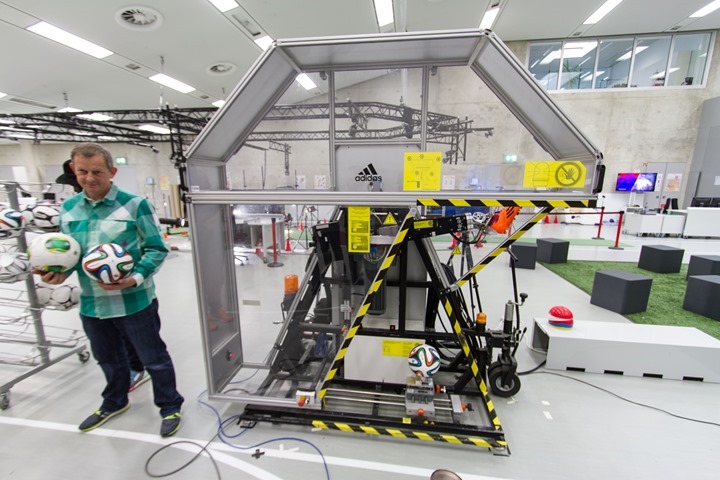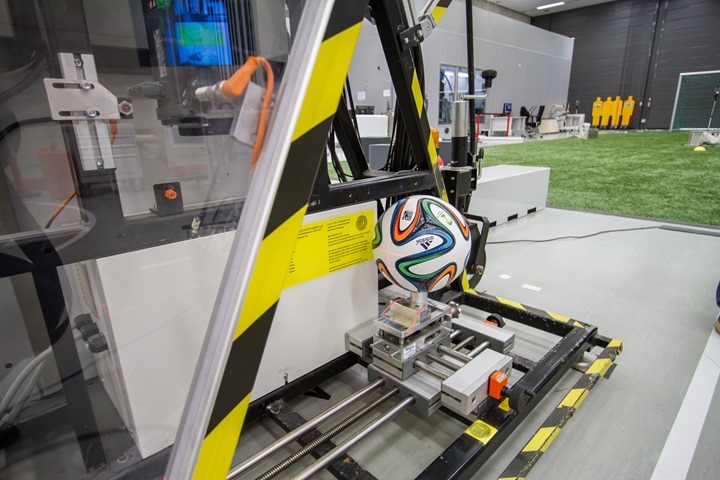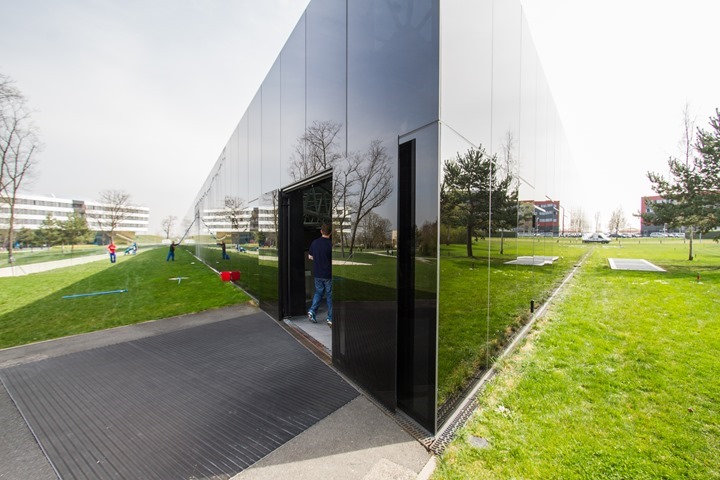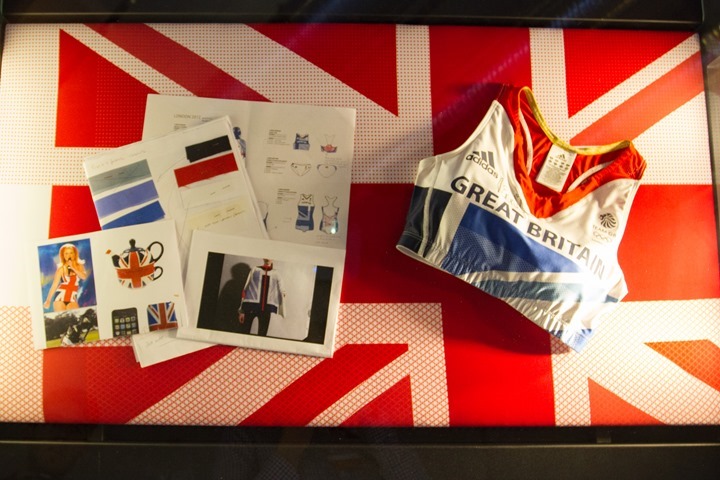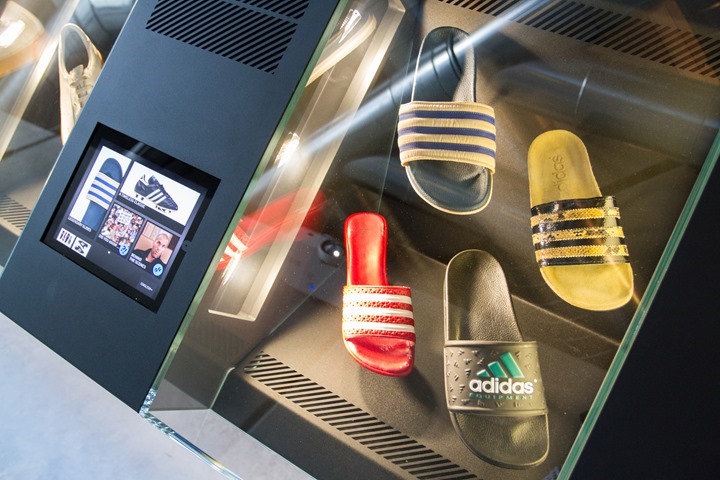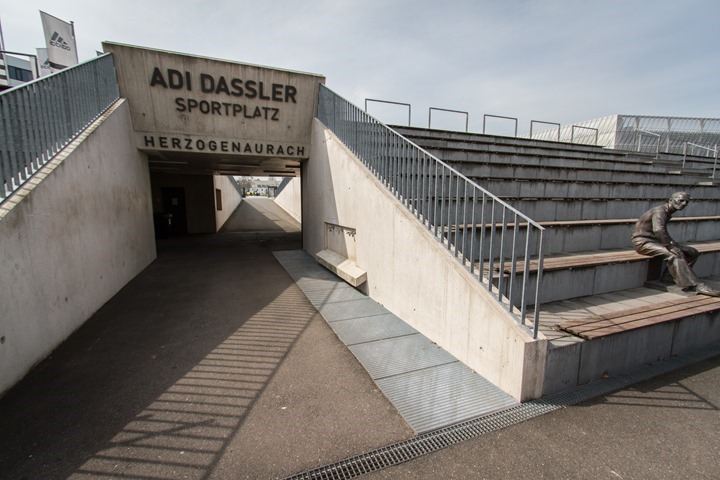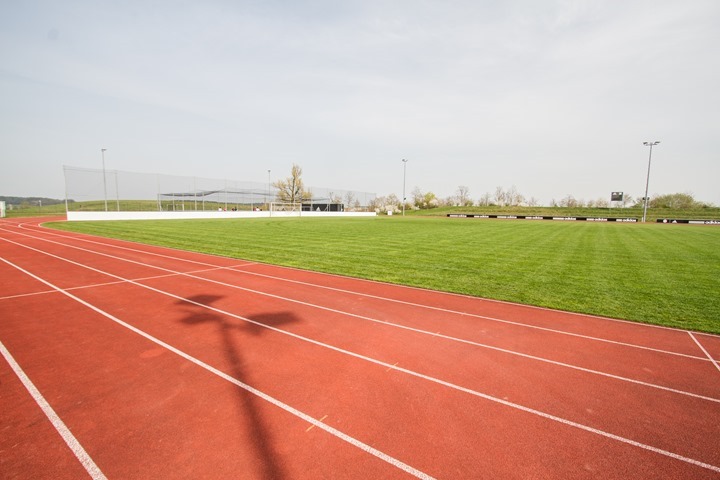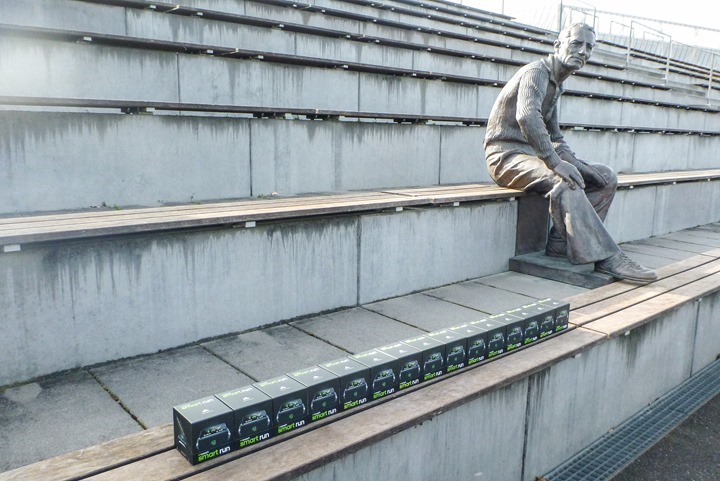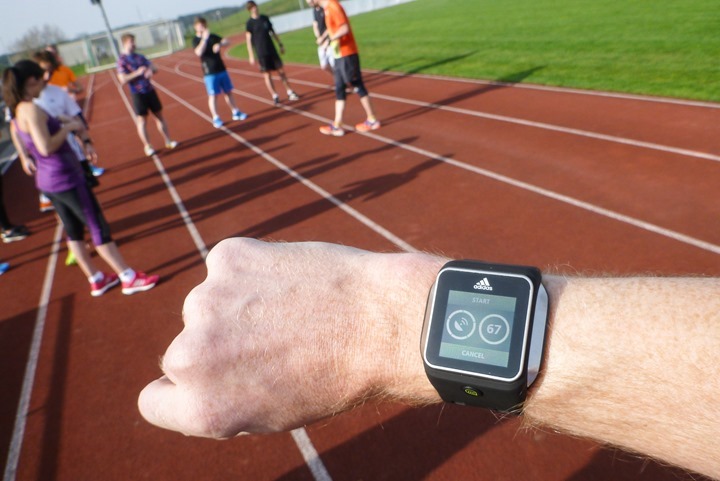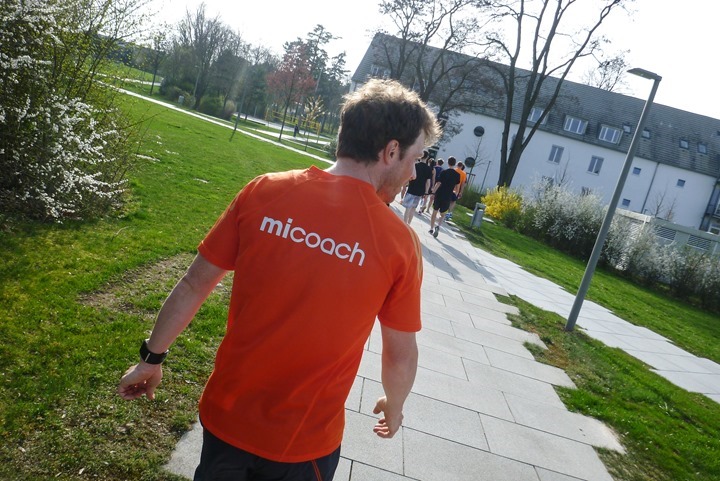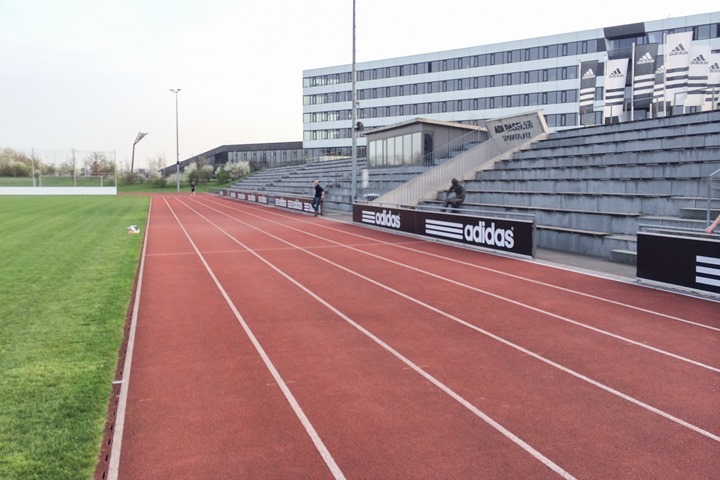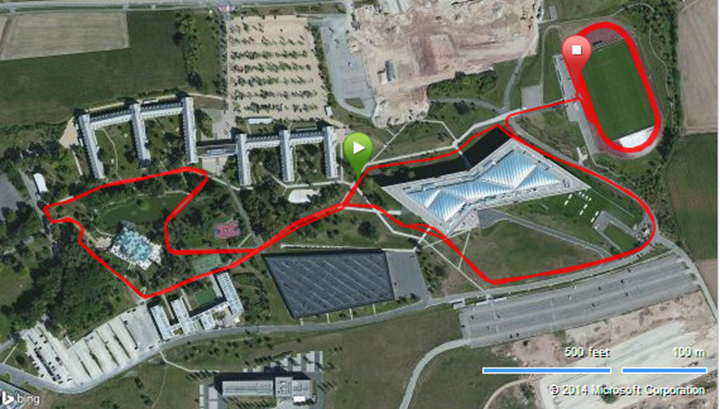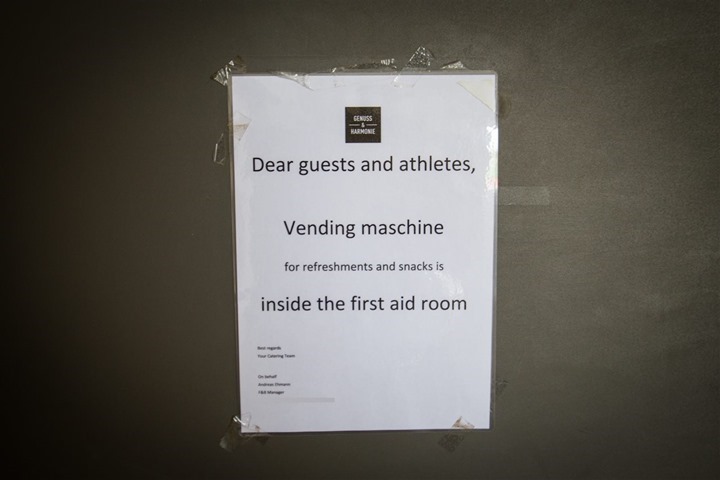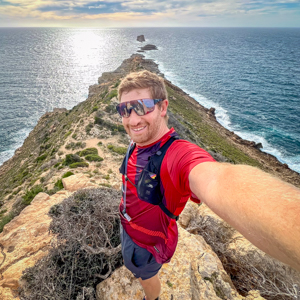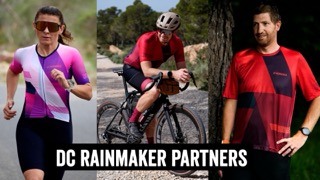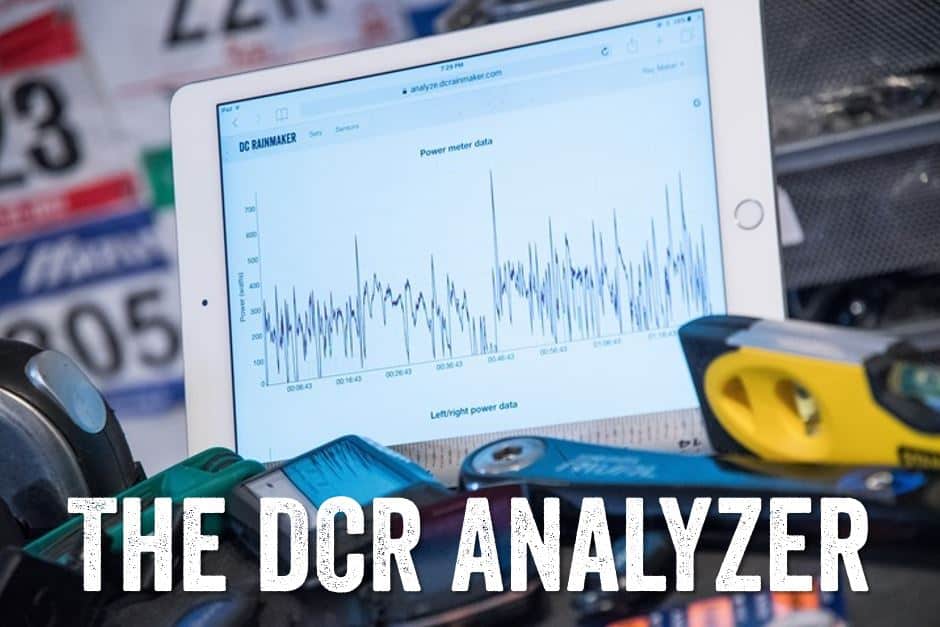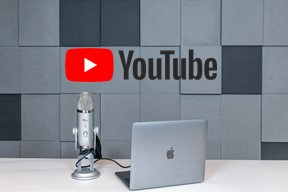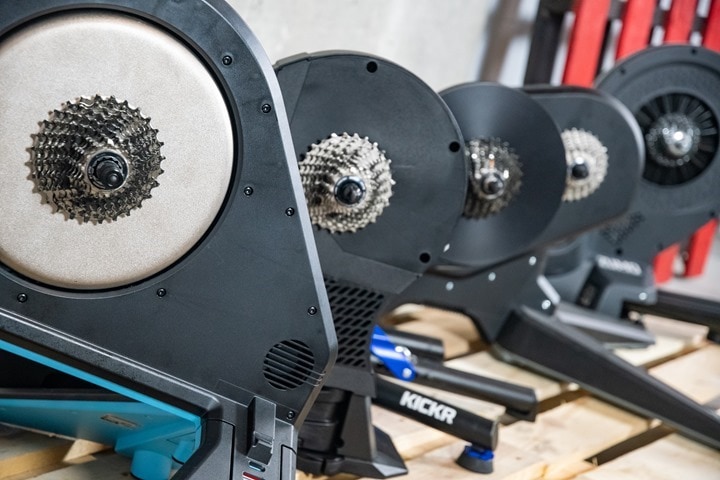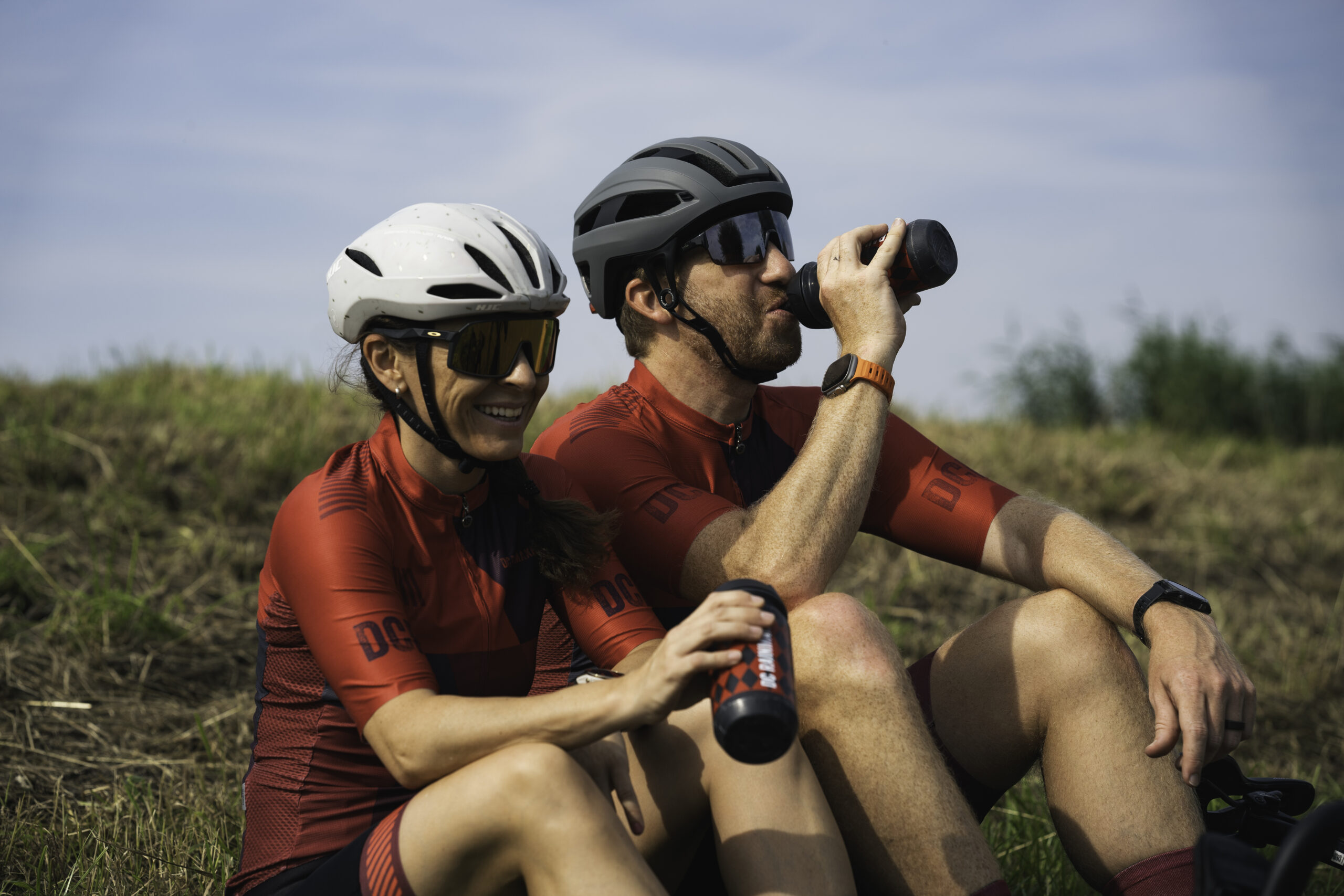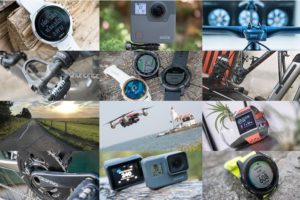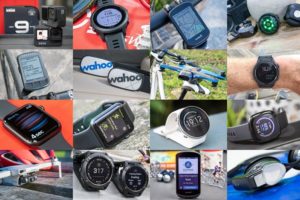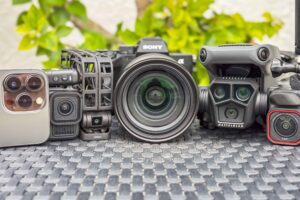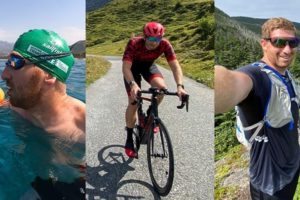Earlier this week I made the short (very early morning) flight to Nuremburg, Germany to visit the worldwide headquarters of Adidas. The purpose of the trip was twofold. First, it was to get a bit of an understanding of the pipeline coming from the company from their miCoach product group, as well as to spend some time behind the scenes at the campus.
I’ll divide up the post into two pieces. The first chunk covers the upcoming miCoach pieces, and the second chunk for the behind the scenes side of things. The day was part of a larger media event that the company was having, but I’m mostly focusing on the sports technology things.
Finally, before we get on with things, as is the norm for me, I paid for my trip and transportation.
miCoach & Smart Run GPS Futures:
The media briefings started off in a building called the ‘shed’, which is a Zebra-stripped (or Adidas-stripped) skeleton of a building about the size of a tennis court. Inside, they do various internal ‘learning’ events (but apparently not internal briefings). It’s designed as a bit of an oasis of a space allowing employees to get away and teach other things.
The miCoach briefings would be led by Director of the miCoach Business Unit – Simon Drabble. He moved over to the company from Polar a number of years ago, and oversaw the development and eventual release of Adidas’s first GPS watch last fall – the Smart Run GPS.
He started off with a bit of a background on where the company started from with respect to sports technology, before then diving into updates planned for the miCoach service and devices.
To start, we’ll go with the Smart Run GPS. They’re planning on continuing with monthly releases as they’ve done to date, at least until they get past the summer. Then it might reduce frequency a little bit but would still continue for some time. They see the device as a platform that is very adapt for future software development/updates well into 2015. Here’s the rundown on planned updates for the GPS unit:
Offline 3rd party music service integration: This is probably the most unique option we’re going to see, which will allow you to play music from the device offline from 3rd party services, such as Pandora or Spotify (Note: they are looking and working with multiple services, so it may not specifically be one or both of those upon launch). Given the unit is heavily focused towards people who like to listen to music while doing activity, this is definitely a nice fit.
Push button to start workouts: This will allow you to utilize the single button on the front of the watch face for more than just looking pretty. Soon, you’ll be able to start workouts from it. They’re also planning customization of the button such as making it for triggering laps or other functions.
Average Pace/Speed Fields: This will add in more flexibility on how to display data from the unit, such as average pace.
Auto Pause: As is common on many other GPS units, this will automatically pause the workout when in a stop/start environment such as a city.
Virtual Racer: This will enable you to race past efforts on the watch. So if you always run around the lake, it’ll allow you to race against that previous effort. Also called ghost runner mode by some companies.
Sync through mobile app: As it stands today, the only method of getting data from the Adidas Smart Run GPS is via WiFi. While that works fine at home, it doesn’t work when travelling – as you can’t easily connect to paid WiFi networks, nor via USB to your computer. This update will enable you to pair to your phone and upload workouts via it.
As you can see above, many of these are items that put it on feature parity with other units on the market. The offline music however is a fairly large departure from that though – and is the first sports focused unit to do anything like that. I have no doubt that’ll definitely appeal to some.
Beyond that, we have seen frequent and good updates from the company on the Smart Run GPS over the last 4 months since release. The battery life is approaching the same levels as other mid-range GPS watches, and the GPS accuracy continues to make solid improvements.
Looking next to to the mobile app side of things, there are a number of updates planned there.
Android App Bluetooth Smart footpod integration: This will enable support for the standard Bluetooth Smart Speed_Cell running footpod/stride sensor. This is already available on both iOS and Windows Phone platforms.
Addition of goals to the app: Firstly, the iOS app will undergo a facelift, as seen below. As part of that, they’ll be rolling out support for creation of goals, which are tied to workout plans that the unit will walk you through.
As part of the overhaul of the app they’ll be moving to a homepage dashboard which surfaces up summary information from the miCoach service. This will pull in data from any workouts logged into the miCoach platform.
Addition of training plans: They’ll be adding the ability to initiate training plans from the app, and then apply them for use by the platform. Probably the most notable item here is the customization levels of the scheduling. Most platforms that do training plans allow you to specify an end date, but rarely do they allow you to pick which days of the week you want to workout.
More overhauling of the app: Finally, just two more pages of provided screenshots, which show the overhaul of the app. You’ll notice that it looks like a blend of their Windows Phone app along with the miCoach Smart Run GPS. They admitted that they had let the iOS look stagnant a bit, and that this should bring it more inline with iOS7 and recent UI trends.
Beyond the app side, there is one notable item coming down the pipeline on the service platform side. Starting in approximately August, they’ll be enabling an open API to the miCoach web/site platform. This will allow any developers that want access to tap into it, provided authentication/authorization from the user.
This is a very nice change of heart from where things first started last fall upon the release of the Smart Run GPS, with virtually no export function, let alone API integration or offerings. Now they’ve done a full 180 and gone in a more open direction.
So open in fact that they are looking at how to open up an SDK to enable developers to tap into the Smart Run GPS unit. That would be the first mainstream fitness GPS device to enable such capabilities (via SDK). While there are are ‘smart’ devices without GPS (such as the Wahoo RFLKT and Magellan Echo), there aren’t any GPS devices that actually sanction developing SDK-level apps. The closest we’ve seen in that space is Suunto with their App Zone, but that doesn’t really allow compiled apps. Rather, it’s more of an execution of data screens.
It’ll be an interesting development to follow. Though, I expect like any new direction it’ll likely take time to mature. Still, both open-access type announcements are a positive step forward that hopefully others will follow.
Behind the scenes:
With the futures briefings complete, it was time to get a bit of a look behind the scenes at the company. The sprawling campus is situated in Herzogenaurach, Germany. Generally just pronounced ‘Herzo’ for short. It’s about a 20-minute drive from Nuremberg, which is about a 2hr train ride/drive from Frankfurt. Which is in turn about an 7-8 hour flight from New York. So, if you can figure out how far you are from New York or Frankfurt, you’re golden.
Speaking of non-pronounceable words, it’s a good time to point out how exactly Adidas is pronounced. Unlike how it’s pronounced in the US: Uhh-dee-dus, the correct pronunciation is Ahh-dee-daas. Just in case you were curious.
The campus is built on an old US Army base, which was run by the Army until as recently as 1992. The barracks seen below have been renovated and turned into office space.
While a large number of buildings on the 3,000 person strong campus are older barracks, there are a number of much newer and more modern buildings.
For example, below is the sprawling cafeteria, along with a giant World Cup ball out front for this summer’s tournament in Brazil.
Inside the heavily subsidized cafeteria, there are a slew of options for food, ranging from pizza to healthier creations that would take the cake on any health food buzz word bingo game.
Most surprising to me however, was simply how young the work force was. Coming from my day job in a more enterprise setting, this really felt like going to a college cafeteria. I’d have to guess the average age would have been around 30 years old.
Leaving the food behind, it was off into the largest building on campus. This massive bewilderingly glassy structure was like being inside a never ending Embassy Suites hotel, where all the rooms look into the courtyard inside. The different groups had their names on the glass facing the inside of the building, as well as on the sky bridges that crisscrossed the building like shoe laces.
Working our way down into the basement of the building was the home of their Advanced Innovation Team (AIT), which is home to all the fun toys and gadgets. If I had a lab space, it would probably start by looking something like this. Mostly because they have a giant quote on the wall that talks about making “tastier chicken nuggets”. As a chicken nugget connoisseur, I’m all for any organization that furthers that purpose.
The facility is a few basketball courts in length, and about one courts width worth. It contains markings on the floor for all sorts of sports and purposes, and at the far end has a soccer goal setup with turf grass. Behind the giant garage doors is the same setup replicated directly outside on real grass.
First up we got a walk through of how they can measure flex of various products, mostly fabrics. Below you’ll see a a handful of large and very expensive high speed cameras pointing at the glass. This enables them to run over the glass (like the lane of a track) at full speed, where the cameras will film the shoe’s movement.
The shoe being tested will have a ton of little dots applied to it. You can see that below in his hands. Those dots are literally just 10 markers rubber banded together and dotted all over the surface.
The camera is then able to watch in high speed as those dots move, ultimately showing where and how the fabric stretches.
The lead times for development of non-gadget products are much longer than that of a GPS watch. On average, a new fabric material may take upwards of 10 years to develop. A new product (such as their Boost running shoes) was about 4 years in the making.
The same 10-shot marker technology can be applied to any material, not just shoes. Such as uniforms:
They had multiple high speed camera setups in the facility. This one was tied to dots placed on the athletes legs, which then monitored movement, similar to what you see in video game production. They can then run tests across a variety of different shoes and/or fabric types to better capture the impact there.
In the corner of the building they had their ‘Clima Chamber’, which is their climate controlled chamber that can be taken from –30°C (-22°F) to +50°C (+122°F). This enables them to test both devices and fabrics. Unfortunately, they wouldn’t let us get any closer than this to the climate chamber facility, due to ongoing tests in there at the moment. Though given the lab techs were wearing cold weather gear going in, I’m going to assume it was something cold.
Next, they had one piece of equipment I’ve definitely not seen at any sports technology companies I’ve visited thus far: A ball kicker.
The machine would accurately and repeatedly kick the ball pretty much exactly where you told it to go. The unit attaches a shoe to a simulated foot at any angle you can imagine, and then kicks the snot out of it.
Obviously, this particular item requires video footage. And thus, I won’t disappoint. Enjoy:

With the test lab behind us, we briefly took a tour through a building known as the ‘Death Star’. This massive single-story glass mirrored glass building covered many football fields of land.
The facility is mostly used as an internal conference center. The Death Star name certainly seems appropriate, given it has terms like ‘Sector 1” painted on the floor. They were setting up for a large internal global Adidas event scheduled for next week.
The building also houses a bit of a museum of Adidas historical snippets:
Everything from uniforms of both long ago and rather recent…
To shoes and flip-flops that brought back many school-age memories. Seriously, I haven’t seen those green ones below in years!
And then time capsules for a variety of innovations that the company has made over the years. I noted that the Smart Run GPS was not in there, which sorta was surprising given a few other products I saw that didn’t quite seem as much of a departure for them compared to others.
With the indoor pieces complete, it’s time to head outdoors…off to their private stadium:
The stadium is named after Adi Dassler, founder of Adidas. There is a statue of him sitting in the second row of the bleachers, overlooking the full sized soccer pitch and 400m tracker looping around the lighted facility.
They had prepared a slew of the Smart Run units to go on a short run with.
Given I have a wee bit of familiarity with the unit already, there wasn’t too much new here for me to toy with.
After some warm-ups near the stadium entrance, the group then headed out for a 5K run in the woods. Given there was a wide range of media folks there, the paces would be fairly…wide.
So instead, I diverted back to the track about 200m into the run and knocked out my scheduled track workout. A few other runners with more set training schedules did similar non-group wanderings.
I pretty much had the track to myself. Well, me and Adi. It’s funny how the statue catches the corner of your eye pretty much no matter where you are on the track, tricking you into believing someone is sitting there.
I was also pleasantly surprised to see various Adidas team members testing a variety of products out there as I looped around. In part because they looked like some of my testing routines with a multitude of devices. As I noted earlier, they’ve done a lot of work in the accuracy area, such as on GPS accuracy.
In any case, around and around I went. I had an 8x800m workout, which was done at 2:50 per 800m, and 90s of rest. Good times on the track.
In almost exactly an hour I had knocked out the workout (including warm-up loops around the campus and then a cool-down), and then headed into the one of the numerous locker rooms under the stadium stands. Along the way I noted the below sign.
Which, made me smile a little bit. I appreciate that they understand that a candy bar or gummy bears are a perfectly acceptable First Aid treatment. That’s my kinda thinking.
With that, it was nearly sunset and time to wrap things up. Hope you enjoyed a bit of the behind the scenes.
Thanks for reading, and have a great weekend.
FOUND THIS POST USEFUL? SUPPORT THE SITE!
Hopefully, you found this post useful. The website is really a labor of love, so please consider becoming a DC RAINMAKER Supporter. This gets you an ad-free experience, and access to our (mostly) bi-monthly behind-the-scenes video series of “Shed Talkin’”.
Support DCRainMaker - Shop on Amazon
Otherwise, perhaps consider using the below link if shopping on Amazon. As an Amazon Associate, I earn from qualifying purchases. It doesn’t cost you anything extra, but your purchases help support this website a lot. It could simply be buying toilet paper, or this pizza oven we use and love.

